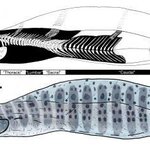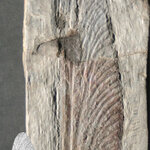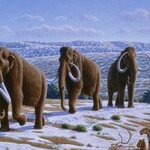Evolution
A new edge-essay by Steven Pinker is bound to lead to vehement reactions: The False Allure of Group Selection. It is worth a read – Pinker is a clear writer and so his position is easy to locate, however, I get the feeling that his position is to smooth talk whatever a certain establishment likes to hear being defended. The last time I listened, he told modern society that it is the most peaceful ever (an amazing feat of cherry picking data and re-interpretation). Now it seems he simply roots for the more well established guys in a heated turf battle: who may talk about evolution.
There is a…

Do you find a coaching center preparing for competitive exams , admission tests, or preparing for examinations in Europe or USA or Japan ? Now no job or admission to any course of any worth is open without any competitive examination in India.
In such a situation students turn to coaching center preparing for competition for admissions to IIT, PET, PMT, CPMT, or coaching for administrative services etc.
Many years ago I studied an article in a newspaper in UK that more and more emphasis is given to professional course…

At Science 2.0, we often joke that biologist Neil Shubin from the University of Chicago can make anything about fish. That's because we've never heard him not able to make anything about fish. His books, talks and research methods show great examples of multidisciplinary research - biology tells us what should have existed, geology tells us the conditions where something might be found and paleontology finds it.
A spine with multiple segments is a feature of land-dwelling animals but the discovery of the same anatomical feature in a 345-million-year-old eel suggests that this complex anatomy…
Researchers announced the discovery of Afrasia djijidae, a new early anthropoid fossil.
The 37-million-year-old Afrasia djijidae resembles another early anthropoid, Afrotarsius libycus, recently discovered at a site of similar age in the Sahara Desert of Libya. That close similarity between Afrasia and Afrotarsius indicates that early anthropoids colonized Africa only shortly before the time when these animals lived. The colonization of Africa by early anthropoids was a pivotal step in primate and human evolution, because it set the stage for the later evolution of more advanced apes and…

There was a time when giant insects ruled the skies and it corresponded to high oxygen levels.
After the evolution of birds, about 150 million years ago, insects got smaller - despite rising oxygen levels. What gives?Insects reached their biggest sizes about 300 million years ago during the late Carboniferous and early Permian periods. This was the reign of the predatory griffinflies, giant dragonfly-like insects with wingspans of up to 28 inches - creepy. The leading theory attributed their large size to high oxygen concentrations in the atmosphere (over 30 percent, compared to 21…

What evolutionary reason would tiny insects 100 million years ago have for collecting and transporting Gingko pollen? They had highly specialized hairs with a ringed structure to increase their ability to collect pollen grains. Their ringed hairs cannot have grown due to an evolutionary selection benefiting the trees so ancient thysanopterans, so-called thrips (a group of minute insects of less than 2 mm in length) must have fed their larvae with pollen. This suggests that this species formed colonies with larvae living in the ovules of some kind of gingko for shelter and protection,…

If you think about it rationally, sex may be fun but it's too much work and, from a reproduction standpoint, the payoff is uncertain. Scientists have speculated for a long time on why all living things don't simply make like amoebas and split.
Scientists believe that sexual reproduction offers two big advantages: It can sweep bad mutations out of the gene pool more quickly. Also, by shuffling parents' genetic material each generation, it increases the likelihood that new genetic combinations will arise that help organisms adapt to their environment.
A new paper also says sexual…

Polar bears are evolutionarily older and genetically more distinct than believed. This largest Arctic carnivore evolved as early as 600,000 years ago, five times older than previously recognized.
Polar bears are uniquely specialized for life in the arctic, given a range of morphological, physiological and even behavioral evidence. That doesn't mean conducting research on the evolutionary history of polar bears is easy. The arctic giant spends most of its life on sea ice, and typically also dies there. Its remains sink to the sea floor and get ground up by glaciers or remain undiscovered…

Climate change is in its fifth decade of being the big concern. In the 1960s and 70s, it was a cooling worry but now there is a warming one. A constant in mammal's surviving numerous climate upheavals throughout earth history has been diversity - the relative range and distribution of mammalian families remained strikingly consistent throughout major climate changes over the past 56 million years.
The first study of how mammals in North America adapted to climate change in "deep time", a period beginning with the Eocene 56 million years ago and ending 12,000 years ago with the…

Our ancestors might have started walking on two feet in order to carry food more efficiently suggests new research in the journal Current Biology.
Bipedalism (walking on two feet) is one of the key features that distinguishes us from chimpanzees and gorillas, our closest relatives, but it is also an adaptation that radically changed our evolution when it released our ancestors’ hands to all kind of jobs.
Despite its importance, the reason why the behavior first appeared remains a mystery. But now a study by researchers from Portugal, the UK and Japan, using wild chimpanzees as a proxy…